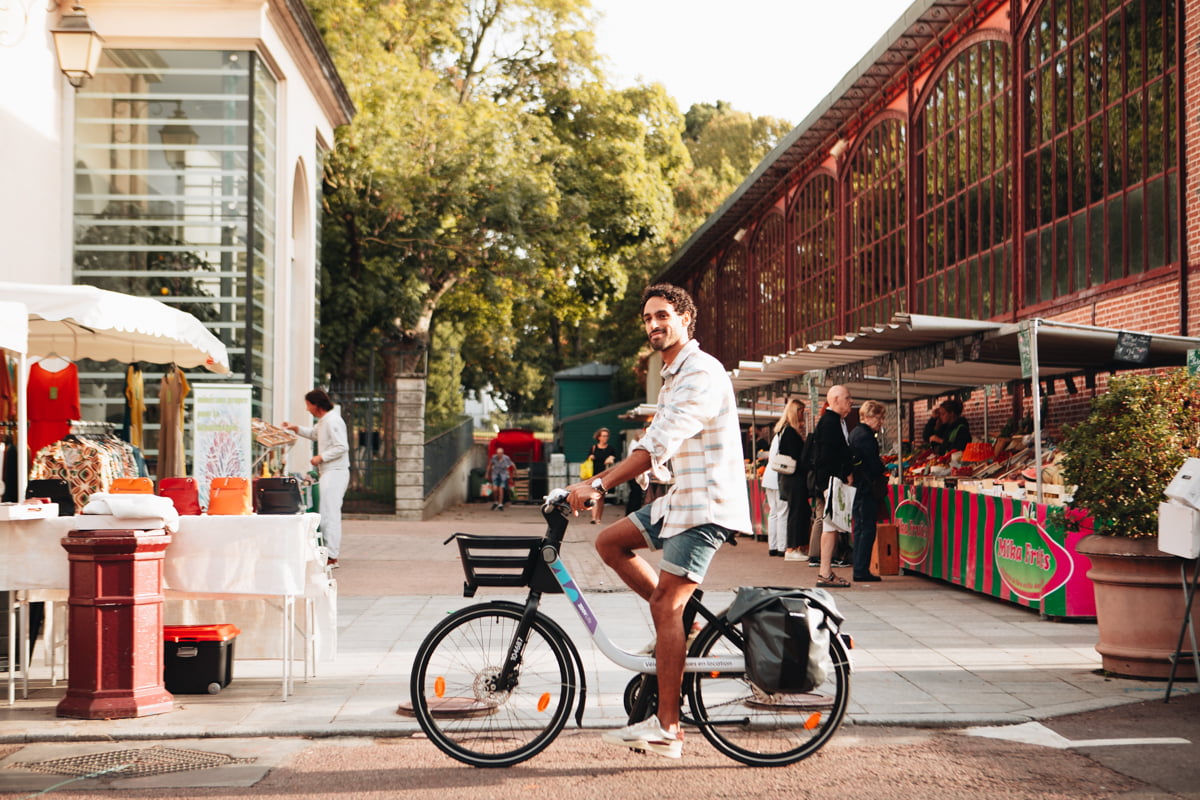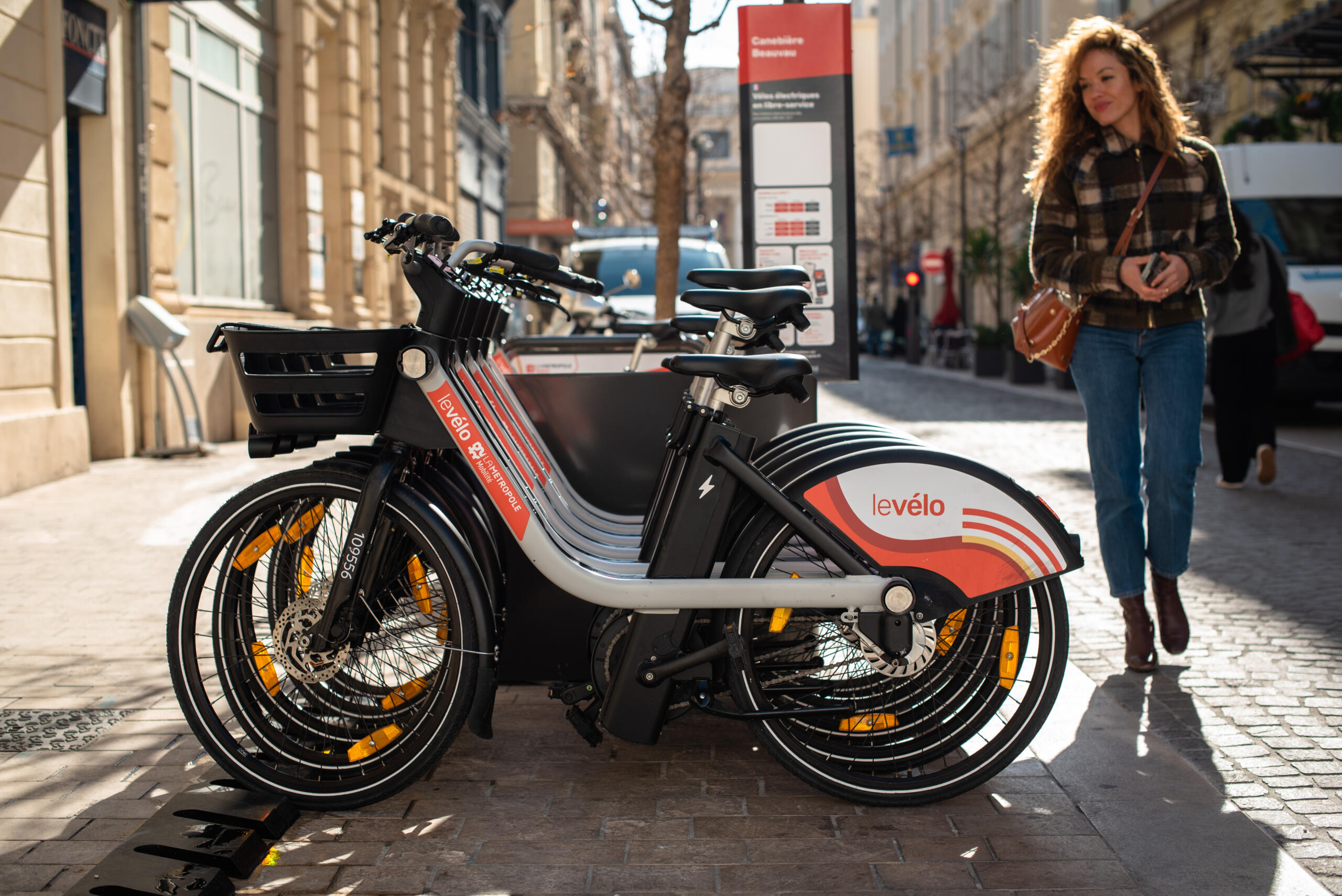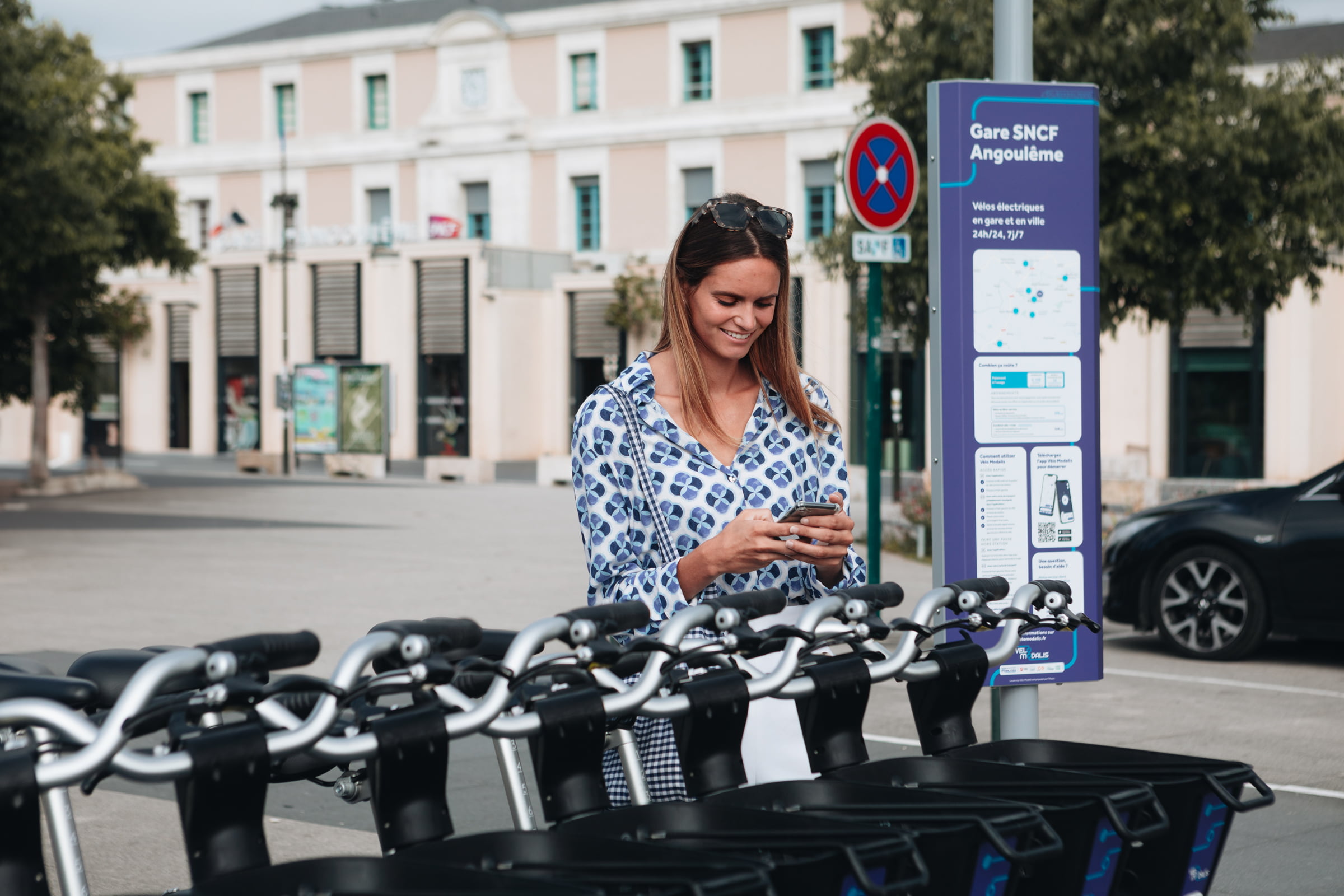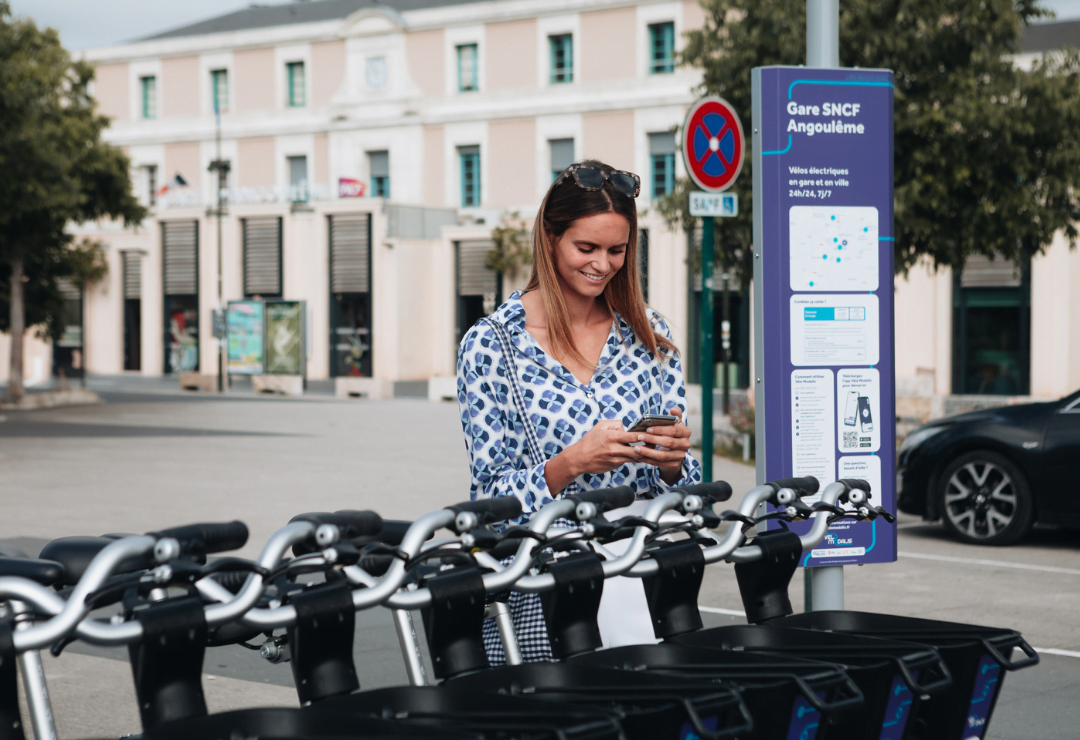Bike-Sharing Is Caring
Discover how Fifteen is reshaping the future of bike-sharing schemes, making them more accessible, sustainable, and user-friendly. Learn about their insights, innovative solutions, and global impact, and see how they are revolutionising the way we think about urban mobility.
An interview with Benoit Yameundjeu, elaborated by Alessia Giorgiutti.
To listen to the recording of the article below, please accept all cookies.
POLIS: What fundamental steps should a city undertake when initiating a bike-sharing service?
Benoit Yameundjeu: There are two types of bike-sharing services: subsidised and non-subsidised. We strongly believe in the subsidised model because it ensures affordability for the population and allows us to serve less densely populated areas that may be less attractive to private operators.

Benoit Yameundjeu, CEO, Fifteen
When preparing for a publicly subsidised bike-sharing service, it is essential to assess the mobility needs of the population. This can be achieved through surveys and public debates moderated by the city. Nowadays, offering both short-term and long-term bike rentals to the public is a key trend to watch out for to increase the use of cycling as a mode of transport.
We also recommend reaching out to other cities that have experience with such initiatives and consulting with experts in the field, like Fifteen. It is not only important to understand the available solutions and technologies, but also to help the city refine its specific requirements. Our role involves providing each city with precise recommendations regarding the bike-sharing scheme that will work best for them, including the number of bikes and stations, as well as optimal locations based on the city's data.
POLIS: What constitutes an Augmented Bike Network, and how does Fifteen strategically leverage or create such networks?
Yameundjeu: Having provided and operated bike-sharing schemes in cities around the world for 15 years, we have gained two crucial insights.
Our first insight is that within a given region, people have varying needs and expectations when it comes to renting a bike. For instance, someone living in the city may be content with a traditional bike-sharing program. In contrast, individuals in less densely populated areas may prefer monthly bike rentals. Alternatively, those using the train for their daily commute might find a last-mile bike-sharing solution appealing. The reality is that many urban areas face these diverse needs but often lack an efficient solution to address them simultaneously.
The second insight is that any urban area can meet one or all of these needs at the same time using a single technology, thanks to high-quality electric bikes and a seamless app-based rental experience.
This is the essence of Augmented Bike Networks: a new generation of bike-sharing schemes tailored to every need, enabling cities and regions to dream big and progress at their own pace. Some cities may want to combine short-term bike-sharing and long-term rentals from day one, while others may initially start with bike-sharing and gradually add other rental options. Since everything is based on the same hardware, adding complementary rental options is effortless for the city. Taking an example of a medium-sized urban area, for example, the city and surrounding villages of Auxerre in France, the results are impressive, with 41% of bike-sharing trips and 80% of long-term rental bike trips replacing trips that would have been otherwise undertaken by car.
POLIS: Among the services offered to cities, including short and long-term e-bike rentals and bike-sharing solutions, what is the methodology for determining the optimal scale of service for a given city?
Yameundjeu: From the very beginning, we recognised that while cities may have some ideas in mind, they also seek guidance to help them design a scheme that truly suits their needs. This is why we have established an in-house team comprising Data Analysts and Urbanists. Their primary role is to provide each city with a comprehensive understanding of its territory and deliver recommendations for the most suitable scheme.
POLIS: Could you provide detailed insights into Fifteen's short-term rental solutions in key locations like Paris, Marseille, Epinal, and Vancouver? Additionally, could you please tell us more about the long-term rental options available in the Auxerre area?
Yameundjeu: In Paris, since 2017 we have been offering Europe's largest bike-sharing scheme, which we take pride in. As we all know, the adoption of cycling in the French capital continues to rise, with Vélib shared bikes bearing witness to this trend. The scheme, consisting of 20,000 bikes, routinely records over 200,000 rides per day. In Paris and Vancouver, the introduction of electric bikes has played a pivotal role in attracting more people to cycling.

Zoov, a shared bikes system combining short and long term rental in the Paris Region. Credit: Fifteen
While in the past, the focus was primarily on the city centre, the perspective has expanded to encompass entire urban areas, sometimes extending to an entire region. This shift is precisely what we're observing with our newest public partners.
In an urban area like Epinal, which includes a city centre of 30,000 inhabitants and surrounding villages, the goal was to provide a solution accessible to anyone in the area. To achieve this, it was decided to cater to all needs by installing bike-sharing stations in every municipality and enabling people to rent bikes for periods ranging from a few hours to a full day. The results are impressive, with electric bikes registering up to seven rides per day.
The urban area of Auxerre (70,000 inhabitants) also serves as a great example. Here, people can easily pick up a bike at a self-serve station and rent it for as long as they like. The service covers 29 municipalities and has exceeded our initial forecasts.
Above all, we take pride in helping decision-makers take the first step. While cities like Amsterdam and Copenhagen set excellent examples as cycling cities, the goal may seem challenging for some cities, but it is attainable. In Marseille, France's second most populated city, the introduction of a fully electric bike-sharing scheme has yielded unexpected results in terms of ridership. In just three months, the new bike-sharing scheme recorded twice as many rides per day as the previous mechanical scheme.
POLIS: How does Fifteen actively contribute to intermodality, and could you elaborate on your involvement in intermodal projects within Greater Paris and Nouvelle-Aquitaine?
Yameundjeu: We firmly believe in the potential of combining train and bike-sharing services to decarbonise longer journeys. To compete with the convenience of using a car, we focus on ensuring that the user experience is as seamless and comfortable as possible. This involves placing bike-sharing stations right at the entrances of train stations, offering an easy-to-use application, and providing affordable fares for the combined use of trains and bikes.
Obviously, OV-Fiets in the Netherlands and Blue-Bike in Belgium are important benchmarks for us. Our goal is to take these schemes a step further. Through our Augmented Bike Network framework, we are introducing a scheme in the Nouvelle-Aquitaine region that allows citizens to rent a bike for a single trip within specific city centres or an entire day at any of the 8 train stations along a regional train line.
POLIS: Can you elucidate the methods Fifteen employs to design bike networks that are both inclusive and accessible, especially in less densely populated areas and communities?
Yameundjeu: The goal of the Augmented Bike Network is to ensure that public bike rental schemes are accessible to all.

2.000 shared ebikes in Marseille. Credit: Fifteen
First and foremost, we achieve this by making our schemes as user-friendly and convenient as possible. This involves designing bikes with frames that are easy to step through, utilising torque sensor technology to eliminate the need for gear shifting, and providing user-friendly bike rental apps.
Secondly, we ensure that our schemes are accessible to all communities by making them available in every neighbourhood. This is made possible by using lightweight and compact stations that can accommodate up to 10 bikes in the space of a single-car parking spot. These stations are also easier to install and more cost-effective for all cities.
Once the scheme is operational, we closely monitor how the service is adopted by the population and assist cities in launching initiatives that position the scheme as a valuable solution for everyone.
POLIS: What specific measures has Fifteen implemented to uphold the environmental sustainability of its bike network concerning its ecological impact?
Yameundjeu: We assess Fifteen's impact in terms of overall CO2 emissions by comparing the emissions generated by our activities with the emissions saved when people use our schemes. To maximise our positive impact, we address both ends of the equation.
In terms of emissions reduction, our efforts are centred on our goal of implementing and operating schemes that serve the population where bike trips have the greatest potential to replace car trips.
As for our emissions as a company, our primary focus is on reducing emissions associated with the manufacturing of our hardware and the actual operation of the schemes. To minimise CO2 emissions related to manufacturing, we have established a bike assembly line in France, for instance. To decrease emissions tied to operations, we are continually enhancing our hardware and software to ensure that each bike has a longer useful life. Additionally, we are using connectivity to make daily operations as efficient as possible, ultimately reducing the need for on-site trips for repairs.
POLIS: In the context of city bike-sharing schemes, how does Fifteen assist municipalities in safeguarding against issues like vandalism and bike abandonment/ dumping?
Yameundjeu: Traditional bike-sharing schemes have often placed too much emphasis on combating vandalism, sometimes at the expense of the user experience. This infrastructure may have served its purpose in the past when fleets were not connected, but times have changed.

Velo Modalis, the first bike+train service in France. Credit: Fifteen
At Fifteen, we harness the full potential of technology and connectivity to prevent misuse effectively.
Most importantly, as our connected bikes secure themselves with a motor-lock and always-active geolocation, we were able to completely reinvent the concept of the bike-sharing station — making it lighter, more compact, and easier to implement for municipalities.
This technology has been successfully deployed in over 10 cities in the past two years, proving to be a crucial element in bringing bike rental schemes to neighbourhoods of all types.
Click here to read the article in its original format.
About the contributors:
Interviewee: Benoit Yameundjeu is the CEO of Fifteen – Augmented Bike Networks. Trained at the Ecole des Ponts et Chaussées, Benoît began his career at Renault and Bouygues. He then joined the Boston Consulting Group before becoming Managing Director France of AUTO1 Group. Benoît led the creation of Fifteen in March 2021. Today, his goal is to make Fifteen the reference for public bike services in European cities of all sizes.
Interviewer: Alessia Giorgiutti coordinates POLIS' corporate communications and magazine and has been involved in several EU-funded projects as Communications and Membership Lead. She currently supports other managers and officers on tasks related to content production and communication for their projects. Her work focuses on making accessible and inclusive content about transport, as well as highlighting the experiences of marginalised users.
